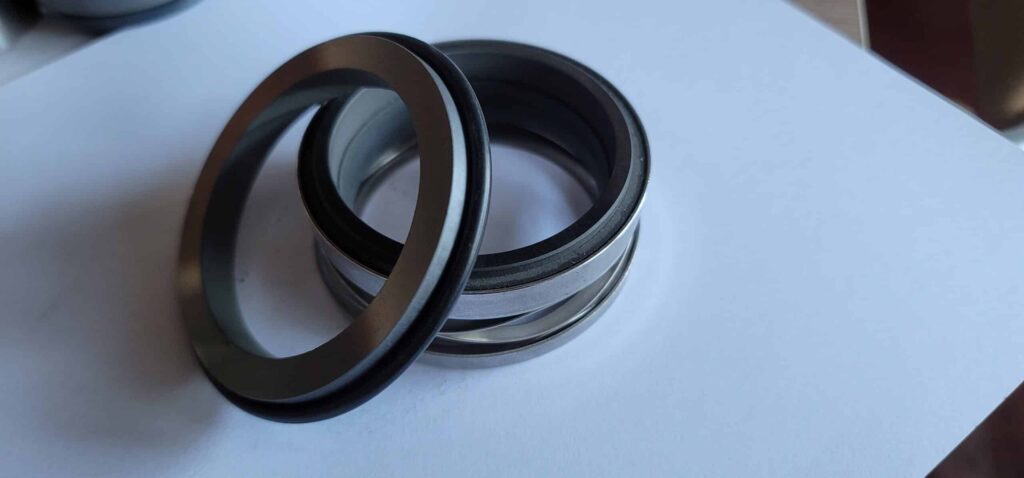
Factors to Consider in the Repair vs. Replacement Decision
Mechanical Seal Age and Condition
If the seal is relatively new and has not experienced significant wear or damage, a repair may be a viable option. However, if the seal is nearing the end of its expected lifespan or has substantial wear, replacement may be more cost-effective in the long run.
Inspecting the seal for signs of excessive wear, such as scoring, pitting, or heat damage, can help determine whether repair is feasible. If the seal faces show minor damage, resurfacing or polishing may restore the seal’s integrity. However, if the damage is severe or the seal’s components are significantly worn, replacement is likely necessary.
Leak Severity
Minor leaks, such as those resulting from small surface imperfections or slight misalignment, may be addressable through repair techniques like seal face resurfacing or adjusting the seal’s installation.
On the other hand, severe leaks, such as those caused by significant seal face damage, secondary seal failure, or compatibility issues with the process fluid, often require seal replacement. Attempting to repair a severely leaking seal may only provide a temporary solution, leading to repeated failures and increased downtime.
Cost and Downtime
In some cases, repairing a leaking seal may be less expensive and require less downtime than a complete replacement. This is particularly true for minor leaks or seals with limited damage.
However, it’s essential to consider the long-term cost implications. If a repaired seal is likely to fail again in the near future, the cumulative cost of multiple repairs and associated downtime may exceed the cost of a single replacement.
Seal Type and Application
Some seal types, such as cartridge seals or those with replaceable components, may be more amenable to repair than others.
The process fluid and operating conditions also influence the decision. Seals exposed to highly abrasive, corrosive, or toxic fluids may require more frequent replacement to ensure reliability and safety. In these cases, attempting to repair a leaking seal may not be advisable, as it could compromise the seal’s integrity and lead to more severe consequences.
When to Attempt Seal Repair
- The seal is relatively new and has not experienced significant wear or damage.
- The leak is minor and not impacting the equipment’s performance or safety.
- The seal faces show minor damage, such as light scoring or surface imperfections, that can be addressed through resurfacing or polishing.
- The seal type and application allow for component replacement or repair without compromising the seal’s integrity.
- The cost and downtime associated with repair are significantly lower than replacement, and the repaired seal is expected to provide reliable service for an acceptable period.
When to Replace a Leaking Seal
- The seal is nearing the end of its expected lifespan or has experienced significant wear and tear.
- The leak is severe and impacting the equipment’s performance, safety, or environmental compliance.
- The seal faces or components show significant damage, such as deep scoring, pitting, or heat-related degradation.
- The seal type or application does not allow for effective repair without compromising the seal’s integrity or reliability.
- The cost and downtime associated with replacement are justified by the expected improvement in performance and reduced risk of future failures.
- The process fluid or operating conditions are particularly harsh or demanding, requiring a new seal to ensure optimal performance and safety.






